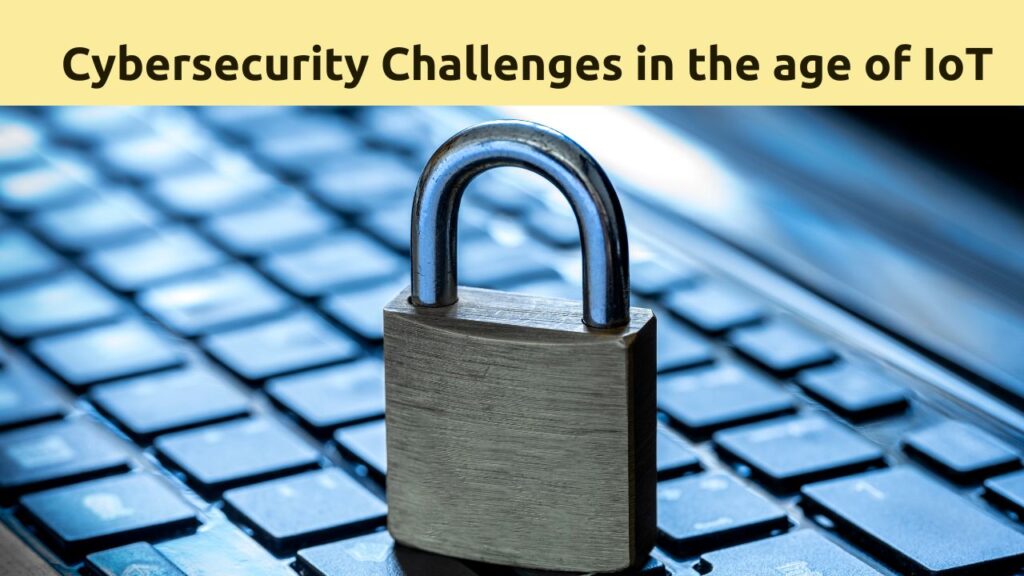Cybersecurity Challenges in the Age of IoT: Protecting Connected Devices and Networks
The Internet of Things (IoT) has revolutionized the way we interact with technology, offering unprecedented convenience and efficiency in various aspects of our lives. From smart homes to industrial automation, IoT devices have become ubiquitous. However, with this proliferation comes a significant challenge: cybersecurity. As the number of connected devices continues to skyrocket, so do the potential vulnerabilities that threat actors can exploit. Securing these devices and networks has become paramount to safeguarding sensitive data and ensuring the integrity of critical infrastructure.
Challenges in IoT Security
- Diverse Ecosystem: One of the primary challenges in IoT security stems from the diverse ecosystem of devices. These devices vary greatly in terms of manufacturers, operating systems, and communication protocols. This heterogeneity makes it difficult to implement standardized security measures across the board.
- Limited Resources: Many IoT devices have limited computational power and memory, which constrains their ability to implement robust security mechanisms. Additionally, manufacturers often prioritize cost and time-to-market over security, leading to the deployment of devices with inherent vulnerabilities.
- Lack of Updates and Patches: IoT devices, especially consumer-grade ones, often lack proper mechanisms for receiving timely updates and patches. As a result, known vulnerabilities remain unaddressed, leaving devices susceptible to exploitation by cybercriminals.
- Data Privacy Concerns: The vast amount of data generated by IoT devices raises significant privacy concerns. From personal information in smart home devices to sensitive industrial data, unauthorized access to this data can have serious implications for individuals and organizations alike.
- Interconnectedness: The interconnected nature of IoT ecosystems means that a compromise in one device can potentially impact the security of the entire network. This interconnectedness creates a complex attack surface, making it challenging to isolate and mitigate security breaches.
Protecting Connected Devices and Networks
Addressing the cybersecurity challenges posed by IoT requires a multifaceted approach involving stakeholders at various levels:
- Manufacturer Responsibility: Manufacturers must prioritize security throughout the product development lifecycle. This includes implementing secure design practices, regularly updating firmware, and providing mechanisms for users to apply patches promptly.
- Encryption and Authentication: Utilizing strong encryption protocols and robust authentication mechanisms can help prevent unauthorized access to IoT devices and data. Implementing techniques such as device authentication and secure communication channels can significantly enhance security.
- Network Segmentation: Segregating IoT devices into separate network segments can limit the potential impact of a security breach. By isolating critical systems from less secure devices, organizations can contain and mitigate the effects of compromised endpoints.
- Continuous Monitoring and Threat Detection: Implementing robust monitoring solutions can help detect anomalous behavior indicative of a security breach. Real-time monitoring allows organizations to respond promptly to threats and prevent potential damage.
- User Awareness and Education: Educating users about the importance of IoT security practices is crucial in mitigating risks. From choosing strong passwords to recognizing phishing attempts, empowering users with knowledge can significantly enhance the overall security posture.
Conclusion
As the IoT landscape continues to evolve, so too must our approach to cybersecurity. By addressing the unique challenges posed by connected devices and networks, we can mitigate risks and ensure a safer and more secure digital environment for all.
FAQs
- Why are IoT devices particularly vulnerable to cyberattacks?
- IoT devices often lack robust security measures due to limited resources and prioritization of cost over security by manufacturers. Additionally, the diverse ecosystem of devices makes it challenging to implement standardized security practices.
- How can individuals protect their IoT devices at home?
- Individuals can enhance the security of their IoT devices by regularly updating firmware, using strong and unique passwords, and enabling encryption where possible. Additionally, securing home networks and disabling unnecessary features can reduce the attack surface.
- What role do regulations play in IoT security?
- Regulations play a crucial role in incentivizing manufacturers to prioritize security in IoT devices. Compliance with regulations such as GDPR and industry-specific standards can help ensure that devices meet minimum security requirements.
- Are there specific industries more vulnerable to IoT-related cyber threats?
- Industries such as healthcare, transportation, and energy are particularly vulnerable to IoT-related cyber threats due to the widespread adoption of connected devices and the potential impact of a security breach on critical infrastructure.
- How can organizations effectively manage the security risks associated with IoT devices?
- Organizations can effectively manage security risks associated with IoT devices by implementing a comprehensive security strategy that includes continuous monitoring, network segmentation, regular updates and patches, and employee training on security best practices.





